
Who are you?
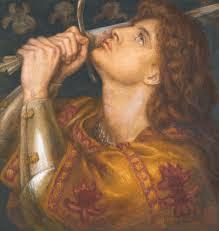
Yes, I know you are Mrs Beyer, but which Mrs Beyer? Or is it Baer?
... and ...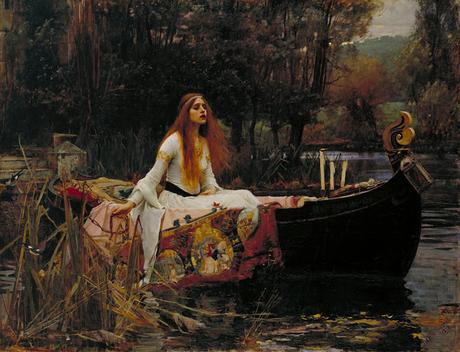
Oi, Waterhouse, keep proper records!
The rules of Blogvent (much like Fight Club, in a way) (actually, not at all like Fight Club) are that anything I attempt had to be done and dusted that day. So, my research and stuff is all crammed into 24 hours. Annie Keane was a bit of an exception as I have a bit of history with her, what with Mary Hillier and everything, which I never had got round to using, but most of the women had just cropped up in the reading that day, like Marianne Shingles. So, I would have loved to research Miss McDowall who was the model for The Bridesmaid (1851) by John Everett Millais, but I was not getting anywhere with the name and so moved on. Similarly, despite having a photograph by Lewis Carroll of the Rossetti model known as 'Mrs Beyer', it was hard to pin her down in census returns. Also, as she was German, people's inability to spell her name properly could not be underestimated so was she 'Baer' or 'Bayer' possibly? Who can tell. Also, Lewis Carroll made some snotty remark about her being slightly older than a desirable model (so that would be anyone older than 7, eh Lewis?) so that meant the poor woman could have been anything between 20-50 and the photograph did not seem to pin down an age...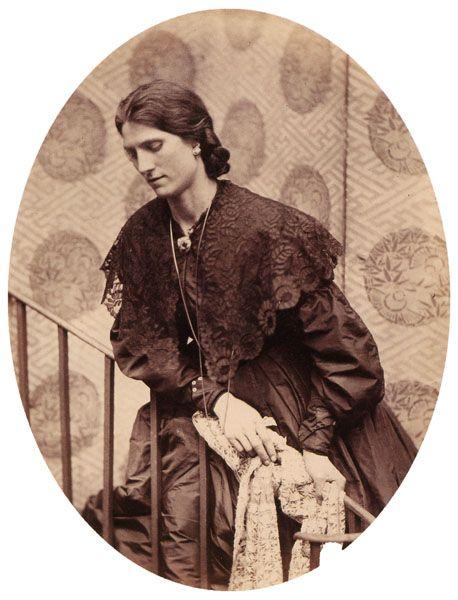
Helene Beyer (1861) Lewis Carroll
One of the questions I get asked most about Pre-Raphaelite Girl Gang is where is the Lady of Shalott. Actually, Waterhouse is a bit of a nightmare when it come to the women. Certainly, we know a couple of names, like actress Muriel Foster or Beatrice Flaxman, but their lives and connection to Waterhouse is a bigger job than a day...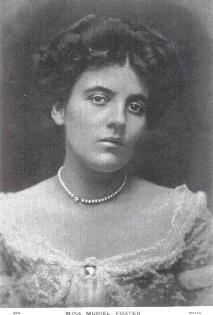
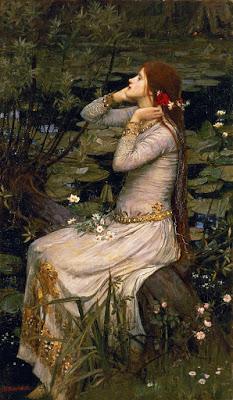
Miss Foster as Ophelia, apparently
As we have talked about before, women's history can be very nebulous, and eminently disposable if that woman does not marry and have children. Women like Florence Anson, who married money and position, are very well recorded indeed; women like Tryphena Foord, whose daughter burnt the papers relating to the paintings, less so. Cyllena Wilson took off on an adventure and so she is difficult to find - we are told through family stories that she died of yellow fever in somewhere like Argentina, but there are no records to back this up. Going back to when I first researched Fanny Cornforth, before the lunacy records were released, it was assumed Fanny had just died in 1906 when she vanished from London and there was no family to record or remember. Had someone not added 'Schott' in brackets in the record of her name at Graylingwell Asylum, it would have remained just plain Sarah Hughes who died there and we would never have known her fate.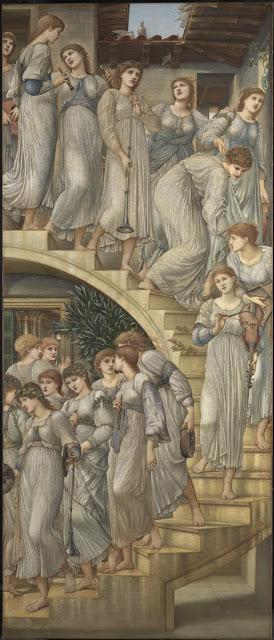
So many women, so little time...
Don't get me started on models like 'Reserva', a woman who used such a posh psydonym that we might never know who she is, only that she is probably the model for the bodies on The Golden Stairs (1880), unless that is Antonia Caiva. Unless Antonia Caiva is Reserva! Was it her super-hero name? It would be quite a good one if it was. Mind you, that doesn't help me at all. If you are going have an assumed name the least you can do is write an autobiography to let me know.
The Sleeping Model (1853) William Powell Frith
So, why is it important to know about the lives of the women who posed for paintings? It is often argued that model's lives are inconsequential to the work, that because they didn't actually lift a finger to create the work (well, sometimes that is not exactly true, because Mary Hillier assisted in the development of the plate negatives for Julia Margaret Cameron) then all we are seeing is what the artist saw, not the person themselves. We shouldn't get distracted by the person and their life, it has no bearing on a painting. Whilst I would agree with that up to a point, I think that it is a rare person who doesn't think of Jane Morris and sadness in the same breath, or Elizabeth Siddal and suicide, or Fanny and sex. Read any newspaper article that mentions them and those tropes get trotted out; read any book on Pre-Raphaelite art where those women are not the main players and those are the images you are bombarded with because of the paintings they appeared in...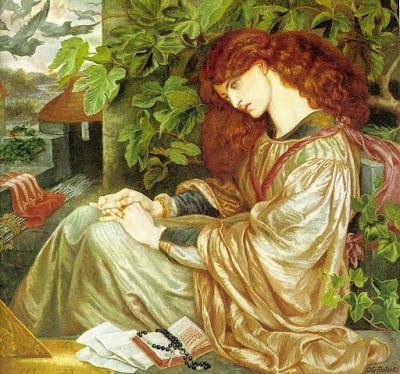
Pia de' Tolomei (1868) Dante Gabriel Rossetti
How do we know that Jane Morris was unhappy in her marriage to William Morris? For the most part, actually, we don't. I am as guilty as anyone for thinking that she was a bit of an ungrateful cow for being miserable in her lovely house, but much of what we apply to Jane is from Rossetti's vision of her, which might all have been wishful thinking on his part. In fact, if you think about it, it would have been deeply disturbing for Rossetti to create so many portraits of Jane's misery if it was real. That is his own misery up there, superimposed onto the face of his best friend's wife who he was obsessed with. Happy Christmas!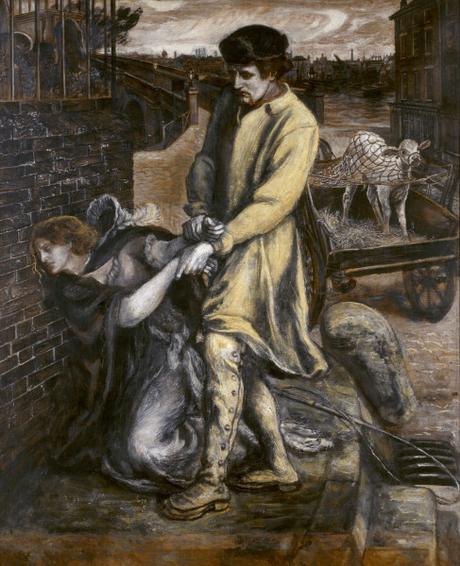
Found (1870s-80s) Dante Gabriel Rossetti and Henry Treffry Dunn
Where there is a model that there is already quite a bit said by someone (who turns out to have their own agenda, I'm looking at you William Bell Scott), or things are said in the context of a moral framework that no longer has such a grip on us, then things like the FACT that Fanny Cornforth was a prostitute is a difficult one to argue against. No, she didn't spit shells at anyone. No, she didn't solicit on the Strand. But yes, she did allow two men to pay all her bills. Yes, she did cohabit with a man who was not her husband and had no problem with any of it. By Victorian standards, that was shocking, but for us it's not, but neither is it prostitution. However, then you have people wanting to argue with you about your obvious prejudice against sex workers. Damn it. Thanks William Bell Scott. I hope your 'hyebrows' never grew back.
Joli Coeur (Ellen Smith) (1867) Dante Gabriel Rossetti
Also, it is vital to read everything said about a woman so you can sort out the narrative you are being given. Ellen Smith was a model for a couple of years before a man who was either her boyfriend or a neighbor attacked her. There is absolutely a difference in what is inferred here. The subtext often given in the story of the violent boyfriend is that Ellen's life choices had caused her own misery. She chose a violent man to be her lover, therefore she got the inevitable beating. Contemporary accounts of Ellen attack imply that actually the man was just a neighbour, a man in Ellen's neighbourhood who became obsessed with her and attacked her. For some reason that account was altered to place the blame at Ellen's door, quite literally, as if her choice of man and choice of career caused her own downfall.
Princess Helen Randis Singh by Edwin Long
So, why do we love to read about the models and why is it important that we continue to seek them out? Because everyone's history is interesting! Yes, sometimes it can be a little gruesome, a tad dramatic, a little bit devastating, but I love to hear about the ups and downs of the lives of others, especially if I am looking at a picture of them. I swiftly add that I equally love to hear that a woman has had a long happy life with oodles of money and children and no terrible threshing machine accidents. I am not a monster. However, because mercifully our lives now are not filled with predictable infant mortality, consumption and threshing machines, it is salient to remember those who did not have our luxuries of vaccination, clean water, and health and safety practices at work.
Alexa Wilding (c.1865)
Also, everyone's history is equally as valid and important. It is vital to hold all stories with equal care and attention and not sacrifice someone to make a point about another person. The biography of Rossetti casts Elizabeth Siddal as victim of his libidinous ways, Jane Morris as the recipiant of his true love/obsessive weirdness and Fanny as a symptom of his folly. By turns Rossetti is the lover, the obsessive, the idiot, all at the expense of the women, which is nonsense. And what of Alexa Wilding, who often gets missed out entirely as she doesn't fit in to any of that narrative. I am tired of a woman being used to expose the folly of a 'great' figure people are trying to undermine. Julia Margaret Cameron's lavish praises of her maid Mary Hillier are another example. Mary is normally portrayed as an idiot (yes, Virginia Woolf, I'm looking at you) for no reason at all other than to make Julia Margaret Cameron look a fool for idealising her. That is a travesty. Worse than that, it's not true.
The Hayloft (1858) Rosa Brett
I get uncharacteristically angry about all this because I see a direct correlation between the lack of respect we give people in the past and the way we treat each other now. The lazy assertion that no woman did anything of importance in the past is both untrue and unhelpful. Start looking and you will see that many women did many things of great importance but either were left off the credits or were not carried forward to be remembered now. It is not only prejudice of their contemporaries that kept women from the pages of history, it is our inability to look for them and value them now. There is absolutely no reason why an artist like Evelyn de Morgan is not as popular as Edward Burne-Jones. There is no reason why Rosa Brett is not as valued as John Brett. We all have a responsibility to include the women of the past in the conversations we have now because it is only a short step from believing women never did anything of importance to believing women can never do anything as important.

Unknown Woman (1865) Julia Margaret Cameron
So I send you all off for a happy Christmas with the final thought that out there are hundreds of women waiting to be identified and valued for their part in Pre-Raphaelite art. Let 2019 be the year when we give them their due. We have the marvelous exhibition at the National Portrait Gallery to look forward to, so this is the year that we start asking for, and getting, parity in history. It's about time.

